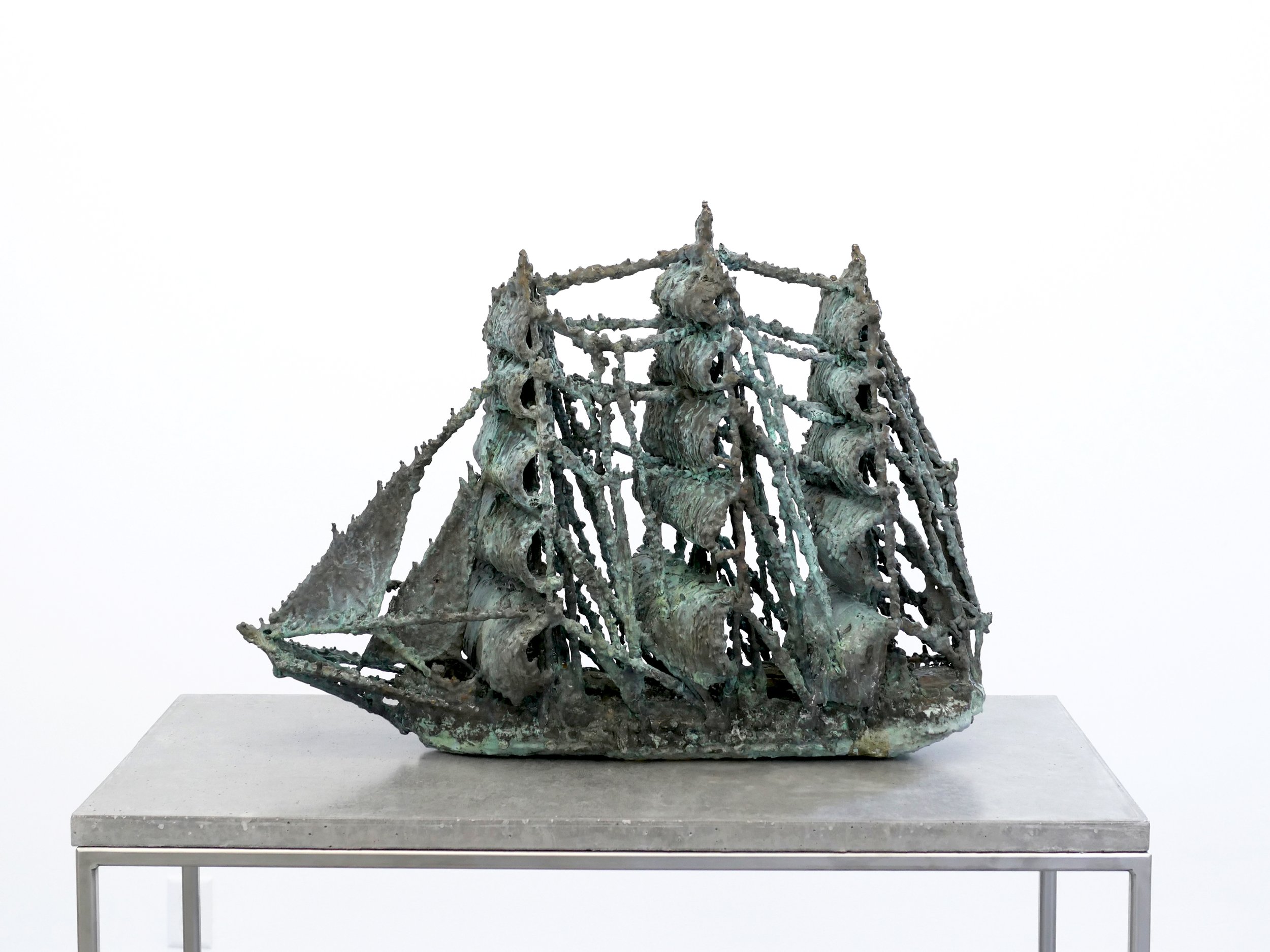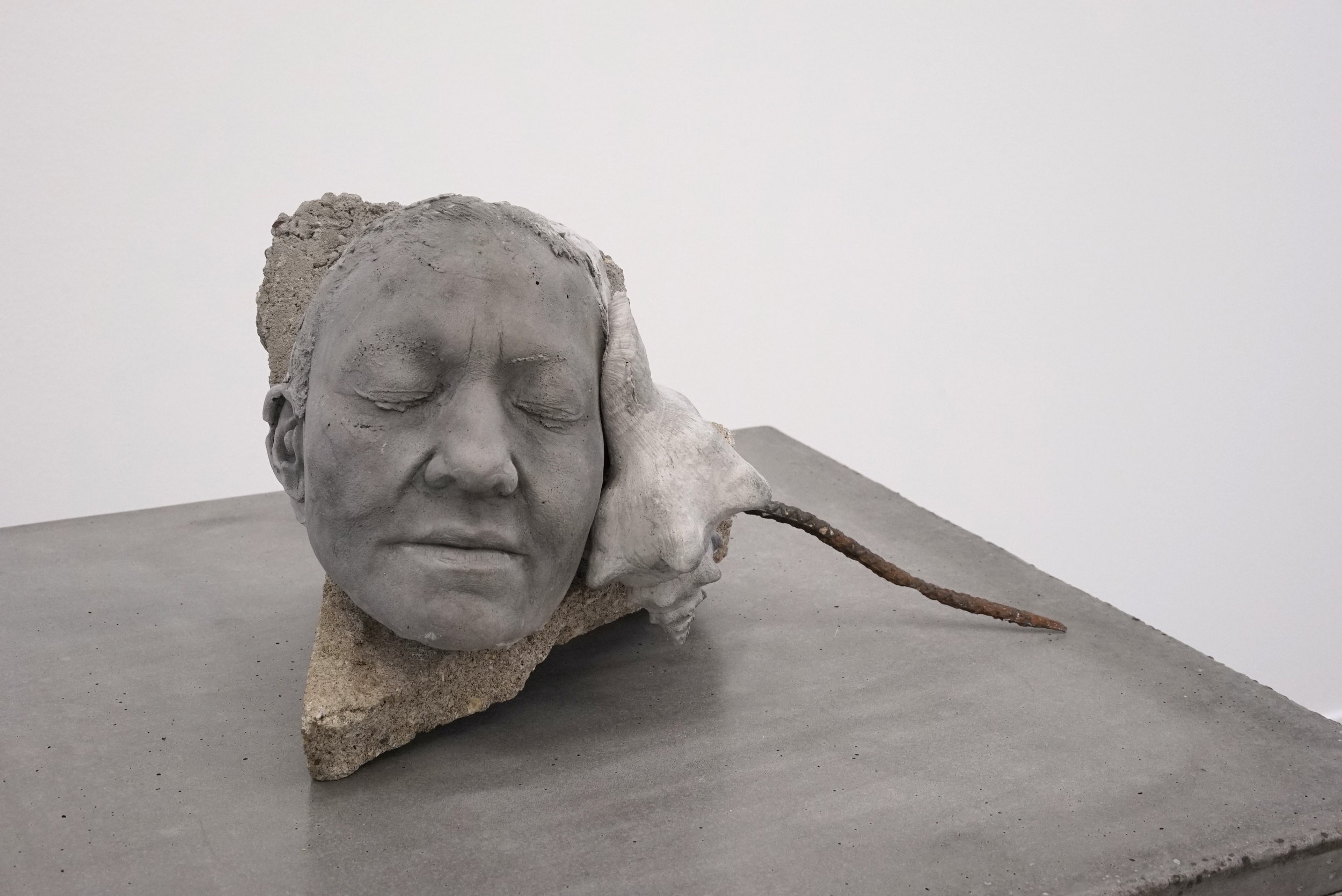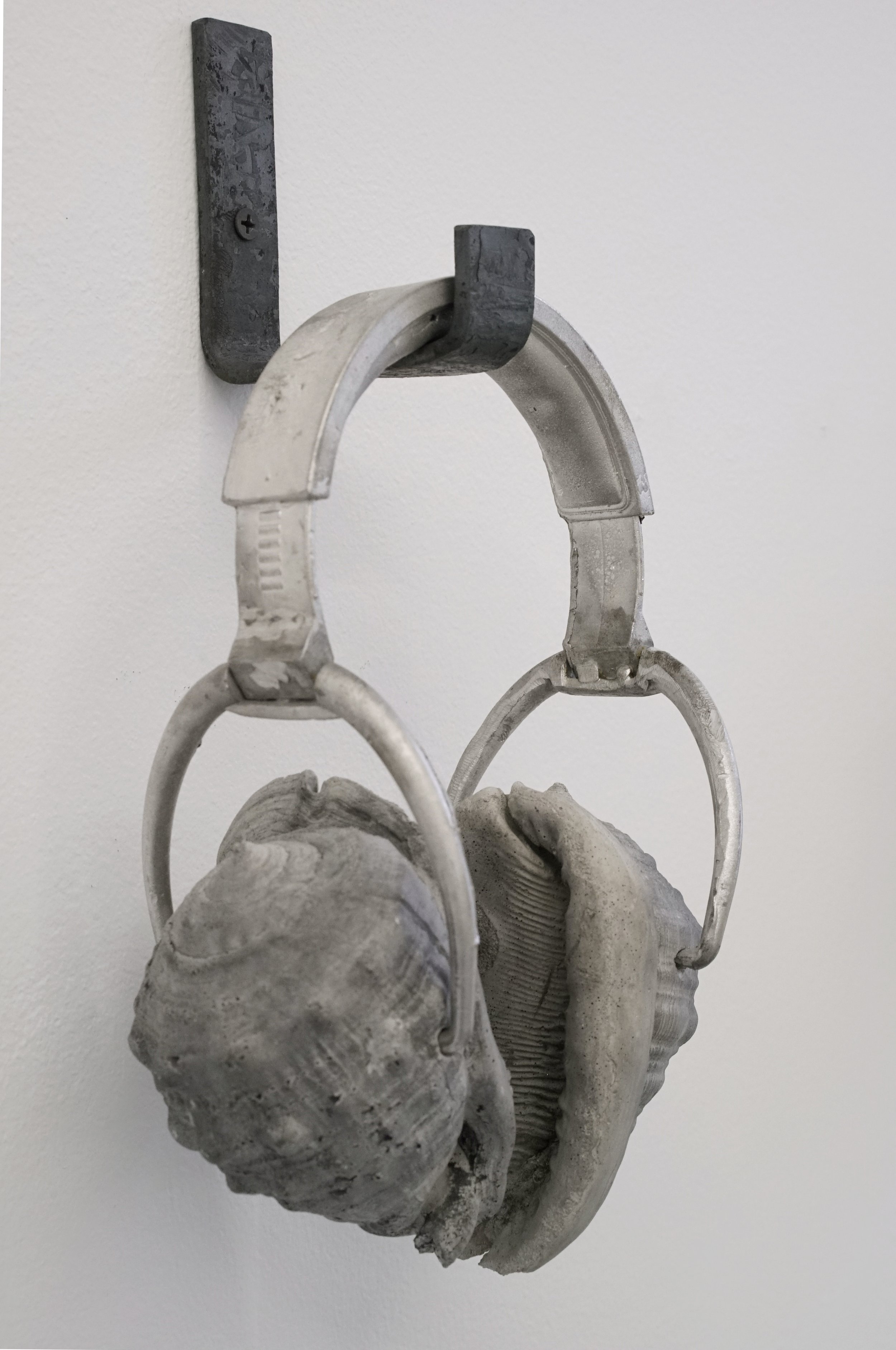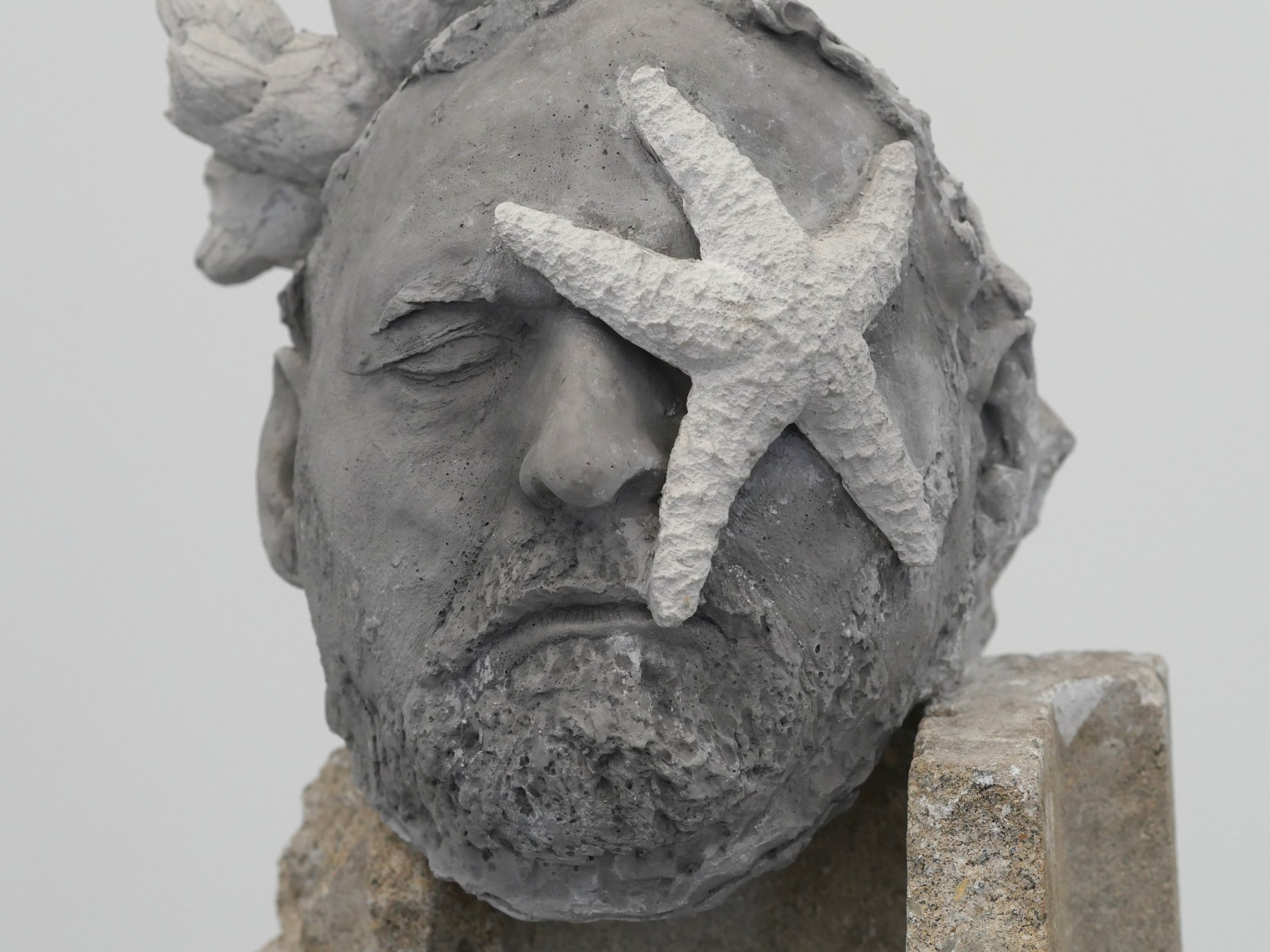UNDER THE SEA-WIND
January 12–February 23, 2024
Dreamsong, Minneapolis
Named after the eponymous book by Rachel Carson, Under The Sea-wind is Alexa Horochowski’s debut solo exhibition at Dreamsong. An immersive and poignant dive into ideas related to ecology, geologically deep time and collective memory that shape Horochowski's practice, Under The Sea-wind features a monumental installation, sculptures and video. Through unexpected collisions of organic materials, corporeal remnants and manufactured products, this exhibition presents a hallucinatory tableau with objects that one might imagine preserved in a natural history museum of the future.
Predominantly cast in concrete—a ubiquitous material of the built environment, a harbinger of ecological crises and the substance that undergirds humanity's futile attempts to tame nature—the objects of Under The Sea-wind venture into the surreal to consider dystopic seascapes, speculative chimeras and other possibilities of cross-species hybridity. Wrack Line (2024) traces the threshold where the sea deposits an array of detritus at high tide. Conceived as an archaeological site for future fossils, Horochowski’s installation presents a multitude of objects atop a bed of steel. A hand grasps a seashell; a discarded gas can bleeds pollutants; plastic bottles accumulate; driftwood is deposited ashore. The installation is animated by moving images that bathe the objects and scale the gallery walls while an immersive sound piece evokes the dissonance between anthropocentric progress and the natural world’s beleaguered resolve (produced with Ben Pagel and Joe Thoen of Artifact Shore).
While the Earth’s oceans are divided into distinct named regions, there is only one global sea and it is in constant motion. Marine organisms, dissolved gasses, pollutants and waste travel through a system of connected currents, circulating the seawaters on what scientists refer to as the global conveyor belt. Envisioning these swirling substances while imagining the aesthetics of future ruins, Horochowski came to a perverse hybridity wherein anthropogenic debris merges with humans, animals, and other organisms. Like the microplastics that flow through our bloodstreams, an albatross gorged on ocean trash, or a hermit crab sheltering in a discarded soup can, Horochowski traces the uncanny effects of cross-contamination.
Several sculptures presented on artist-designed plinths occupy the gallery’s back room alongside a new video piece documenting a fishing boat at sea, visible past a preternatural horizon of sand carved out by the surf. In The Mason (2024), the bloated, mournful head of a bearded man is colonized by barnacles and starfish. Recalling a Classical Greek sculpture rendered absurd by a stroke of surrealist juxtaposition, the work expands on notions of hybridity central to the exhibition. In other hybrid forms, cast concrete shells hang from headphone armatures even as their primordial echo is obliterated. Recalling the myth of Perseus who used Medusa’s slain head to petrify his enemies, La Sirena (2024) depicts the head of a woman with a shell to her ear. Both woman and conch are silenced by sediment and time.
Derelict (2013/2024) depicts a schooner that appears to have materialized from the mists of The Age of Sail. Cast in deeply oxidized bronze from a model dipped in wax, the work considers the materiality of time and references the history of maritime trade and conquest. The frozen strands of Cochayuyo (2014/2024), cast from a bull kelp specimen found on the Pacific coast of Southern Chile, harken to the ocean’s ceaseless flux.










